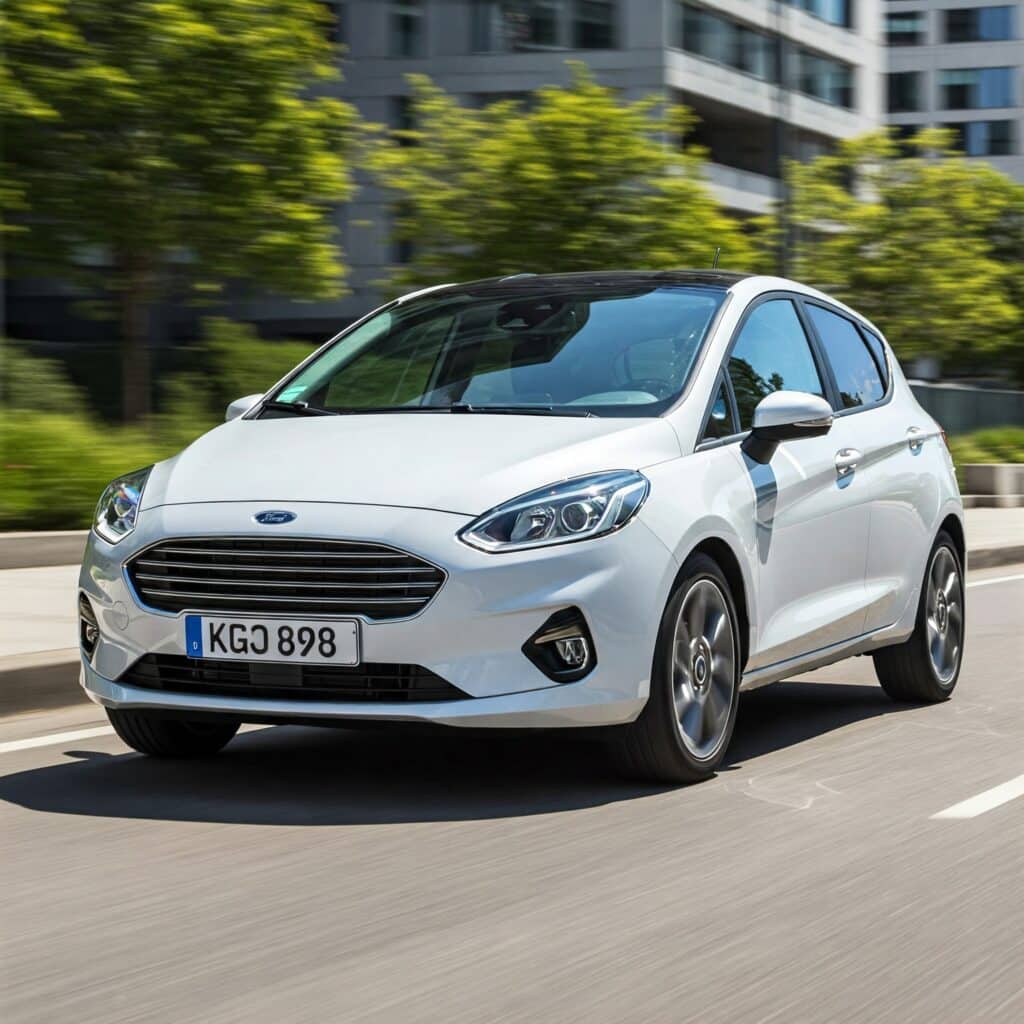Affordable Electric Ford ‘Fiesta’ Rumored for 2026 US Release
On February 24, 2025, AutoCar and Yahoo! Autos reported that small, affordable Ford EVs may be hitting America’s roads as soon as 2026.
Ford is preparing for a bold comeback in the affordable EV segment with a new, in-house “skunkworks” architecture led by renowned EV engineer Alan Clarke. The program aims to underpin a new generation of compact, efficient, and attractively priced electric vehicles that could serve as spiritual successors to iconic models like the Fiesta and Focus, while also supporting a full-electric evolution of the Puma crossover.
This initiative signals Ford’s strategy to move beyond its current SUV-heavy EV lineup—anchored by the Explorer, Capri, and Mustang Mach-E—and reenter the competitive lower-cost EV market. The company has confirmed the first model based on this architecture will debut in late 2026 or early 2027, with its launch slated for the U.S. market.
The upcoming platform’s headline goal? Efficiency. Clarke’s team, now 300 strong and packed with talent from Rivian, Apple, and even Formula 1, is laser-focused on creating what Ford believes could be the world’s most efficient EVs. This focus comes in response to growing pressure from dominant players like fast-moving Chinese OEMs, which Ford CEO Jim Farley recently acknowledged as the key competitors in this segment.
Cost is also central to the project. According to Model E COO Marin Gjaja, Ford is engineering these new EVs around LFP (lithium iron phosphate) battery technology, known for being more affordable and stable than traditional lithium-ion packs. LFP batteries are rapidly becoming the norm in budget-friendly EVs and are a cornerstone in making Ford’s vision for truly affordable electric models viable.
While the Puma EV arriving later this year in Europe is the first step, it won’t stand alone for long. Gjaja noted that while plans for other small EVs are still theoretical, Ford clearly sees space below the 4.5-meter-long, £40,000 Explorer to expand. Importantly, he emphasized that future models won’t follow traditional vehicle templates—they’ll be “differentiated” in their segments, with fresh designs and new formats.

This “skunkworks” effort marks more than just a new platform; it’s a symbol of Ford’s broader pivot. Speaking on Ford’s evolving brand strategy, Anna Lena Strigel, director of sales and brand for Model E in Europe, noted that Ford’s future lineup will be a smaller, more targeted portfolio, focused on strategic appeal rather than sheer volume.
“We are not just going for volume anymore,” Strigel explained. “Our dealers have done an excellent job moving many Fiesta customers up to Puma.” That upmarket shift is a cornerstone of Ford’s repositioning—dropping legacy models and investing in EVs that serve both economic and environmental goals.
Ford ended production of the Fiesta globally in 2023, including in Europe, with the last vehicle rolling off the assembly line in June 2023.
Still, the challenge is steep. Ford is essentially pulling a “double switch,” moving both away from traditional internal combustion engines to fully electric vehicles and from being a mainstream, mass-market brand. With this architecture, it may finally have the technology, talent, and strategic clarity to pull it off.
In an increasingly crowded global EV market—where affordability, innovation, and differentiation are key—Ford’s skunkworks platform could be the foundation that brings the Blue Oval back to the everyday driver.
EVinfo.net’s Take
Overnight, everything can change in the EV business. That’s how fast this exciting revolution is moving.
Earlier today we reported on the exciting new low-priced, highly customizable Slate Auto electric truck, which will be available for under $20,000 if the federal EV tax credit survives. (See why this and other EV subsidies are vital, which are now under threat.)
OEMs are learning NOW is the time for smaller, lower-cost EVs to not only reach price parity with gas vehicles, but to go even lower-priced to fully kick off mass EV adoption in America. We’re very excited to see progress on Ford’s low-cost, small EVs. The sooner these come to the US, the better chance Ford has to remain in the new top three EV sellers in America along with GM and Hyundai.
EVs are not only more eco-friendly than traditional gas-powered vehicles, but EVs are more cost-effective as well. With smaller, lighter models such as these Ford EVs, that cost-effectiveness will become even more dramatic.

Electric Vehicle Marketing Consultant, Writer and Editor. Publisher EVinfo.net.
Services